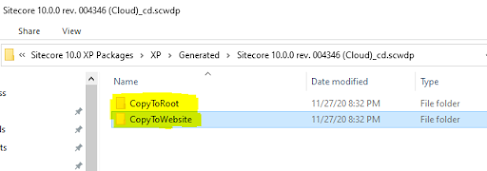scFootsteps' Chaturanga Ranatunga Wins Sitecore Most Valuable Professional Award
Elite distinction awarded for commitment and dedication to the Sitecore community
Colombo, Sri Lanka — February, 04, 2020 — scFootsteps' Chaturanga Ranatunga, today announced that Chaturanga, Independent Sitecore Consultant has been named a Most Valuable Professional (MVP) in the Technology category for the 5th consecutive year by Sitecore®, the global leader in digital experience management software. Chaturanga Ranatunga was one of only 154 Technology MVPs worldwide to be named a Sitecore MVP this year—not to mention the only person from Sri Lanka to be named a Sitecore MVP 2020.
Recognizing professionals within the Sitecore community who actively apply their talent and expertise to help others best utilize Sitecore products to deliver premier customer experiences, the MVP program is now in its 14th year. Of more than 13,000 certified developers and over 24,000 active community participants, the 316 MVPs are truly an elite group. This year’s MVPs were selected for the quality, quantity and impact of the contributions they made in 2019, including the sharing of product expertise and mastery of the Sitecore platform to support both partners and customers.
As a Sitecore Freelance Consultant with more than 10 years of Sitecore development experience and overall 12 years in the software industry, I've thoroughly enjoyed sharing my expertise of Sitecore products, including on this blog and through the other community channels. (scFootsteps - Chaturanga Ranatunga)
“One of our greatest assets is the highly collaborative Sitecore community, where members share technical knowledge and insights across numerous channels and at events to help each other build greater digital experiences for their organizations and customers,” said Pieter Brinkman, Senior Director of Technical Marketing at Sitecore. “Sitecore MVPs stand out as leaders within the community for their passion and willingness to invest their own time with contributions ranging from educational blogs, videos, podcasts and speaking engagements to community engagement and support on social media and forums. They are an invaluable resource and important part of the Sitecore user experience, for which we are truly grateful.”
“Sitecore MVPs are always at the top of the list to get access to the latest developments and offerings from Sitecore, and we will rely on them heavily when we introduce the new Software as a Service offering later this year. I am looking forward to working on this together with this incredible group.” added Brinkman.
Sitecore’s SaaS offering will make it much easier and faster to build digital experiences, while maintaining the flexibility for Sitecore partners and customers to create differentiated experiences. Once a user is on Sitecore’s SaaS platform, they will always have the most current version of the product with the ease of automatic upgrades.
More information can be found about the MVP Program on the Sitecore MVP site: http://mvp.sitecore.com.
















